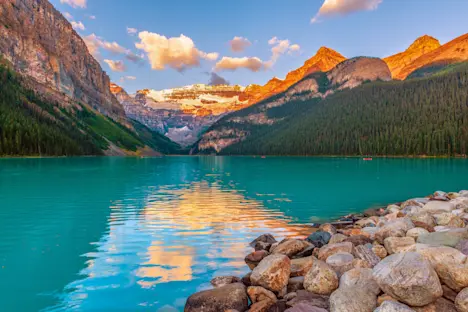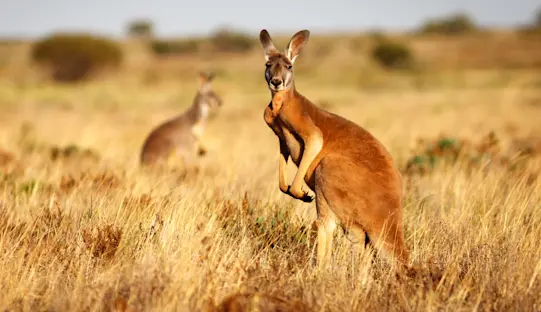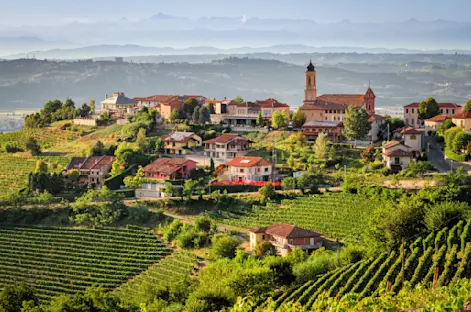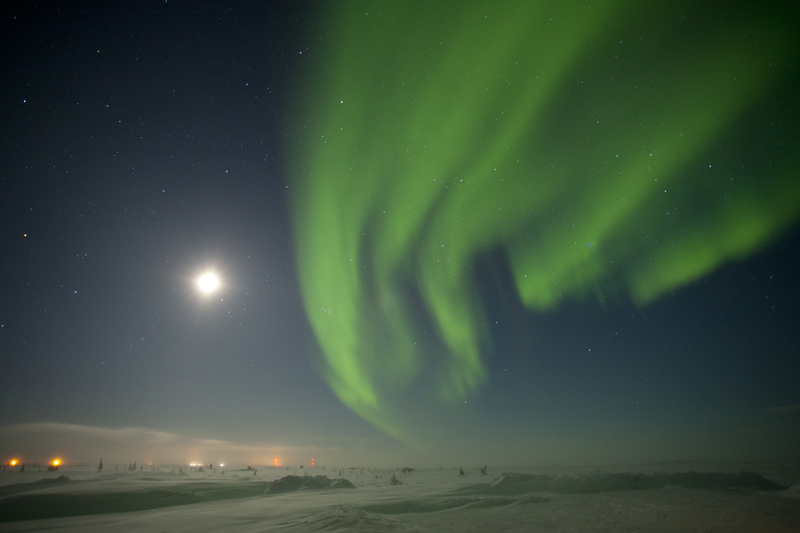By Nat Hab Expedition Leader Katrina Rosen
How the Moon Became Earth’s Regulator
The moon is more than a bright light in our dark sky; it’s a key to understanding our planet, our calendars and ocean tides. I’ve spent countless nights camping beneath the moon and hundreds of evenings under brilliant northern lights, but it wasn’t until recently that I truly began paying attention to the moon. When I did, I found it fascinating.
My mom, son and I spent a year following the moon. Although I was a thousand miles away from my mom, we celebrated every full moon together. Sometimes it meant adventures like canoeing at night, cross-country skiing in moonlight or hiking up a small hill. Other times, it was a simple acknowledgment of going into the backyard to gaze at the moon. Though we honored it one evening a month, I soon realized we were always present in its cycle. It helped us observe our surroundings closely. Eventually, we began to appreciate new moons and half moons and wanted to learn even more.
The Origin of the Moon and Its Influence on Earth
Much of what we now call the moon was once part of Earth. The most accepted hypothesis is that a Mars-sized celestial body named Theia collided with Earth 4.5 billion years ago. This collision blasted molten debris into space, which gradually coalesced, cooled and formed the moon.
Though approximately one-quarter the size of Earth and 400 times smaller than the sun, the moon is considered large. Its close proximity—400 times closer than the sun—means its gravitational pull significantly impacts our planet. Some scientists suggest humans might never have evolved without the moon.
One primary influence of the moon’s gravitational pull is Earth’s tidal friction. This pull decelerated Earth’s rotation over billions of years, lengthening days from around six hours to today’s 24 hours. If Earth still spun four times faster, we would experience extreme winds and unstable weather. Evolution would have unfolded differently. Billions of organisms, including marine life and humans, evolved to align with the slower daily cycles shaped by the moon.

Nat Hab travelers photograph beluga whales in Churchill, Manitoba.
Marine Life Thrives on Lunar Cycles
While the moon’s gravitational pull affects the entire planet, it’s most noticeable in the oceans, where water flows more easily than rock. As Earth rotates, gravity creates bulges of higher water—high tides. During new and full moons, the alignment of the sun, Earth and moon intensifies tides, creating higher high tides and lower low tides called spring tides. (Note: The term “spring” originates from the Old English word meaning “to rise quickly,” unrelated to the season.)
Ocean tides circulate nutrients essential to marine ecosystems. High tides bring fish close to shore, and low tides expose mussels, crabs, seaweed and barnacles. Over millions of years, these intertidal zones became places where organisms first adapted to terrestrial conditions. Shorebirds, fish and whales often time their feeding with the tides. Without the moon, Earth’s tides would be far weaker, significantly altering marine ecosystems.
Churchill, Manitoba, has impressive tides reaching 10–16 feet, creating ideal conditions for observing northern lights, polar bears and beluga whales. Today, tides are predictable via apps or charts, but humans have relied on tidal knowledge for thousands of years. In the Pacific Northwest, people built tidal weirs to catch fish at high tide and collected seaweed and mussels at low tide.
Lunar Phases and Cycles
The moon takes 27.3 days to orbit Earth. Interestingly, we always see the same side of the moon because its rotation period matches its orbit—27.3 days. Technically, the moon’s day is as long as its year.
A new moon occurs when the moon sits between Earth and the sun, showing us its dark side. As it rotates, a sliver of illumination gradually appears. At quarter moon, the moon sits at a 90-degree angle from Earth and the sun, appearing half illuminated. During a full moon, Earth is between the sun and moon, revealing its fully illuminated face.
Due to Earth’s orbit around the sun, we perceive a complete lunar cycle (from one full moon to the next) in 29.5 days. This shift explains why moonrise occurs 49 minutes later each day. A new moon rises with the sun and sets with it, while a full moon rises at sunset and sets at sunrise.
Why Does the Moon Rise and Set in Different Locations?
The moon’s orbital plane is offset by 5.1 degrees from Earth’s orbital plane around the sun. Combined with Earth’s axial tilt of 23.5 degrees, the moonrise or moonset can vary by up to 29.6 degrees longitude from due east or due west.
Lunar Influences on Wildlife Behavior
Earth’s ecosystems rely heavily on lunar phases. Studies show moon cycles affect insects, birds, fish and mammals. Coral reefs time spawning events with lunar cycles, releasing eggs and sperm simultaneously during slack tides to enhance survival.
Birds like shearwaters become more active during full moons. Many species use lunar illumination for nocturnal migrations. Sea turtles often enter oceans during high tides, and narwhals rely on moon-induced tidal currents to find squid and fish. Belugas follow high tides into shallow estuaries, providing perfect conditions for kayaking trips with Natural Habitat Adventures during Churchill summers.
In Arctic winters, I imagine an Arctic fox trotting after a polar bear beneath the bright full moon—a welcome respite from months of darkness. (Next time you feel “loony,” blame it on the full moon!)

Cultural Connections to Lunar Cycles
Humans have long used lunar cycles as natural calendars. The word “month” originates from early forms of the word “moon.” Although our Gregorian calendar is solar-based, Islamic, Chinese and Jewish calendars are lunar-based. Lunar influences persist; for instance, Easter occurs on the first Sunday following the first full moon after the spring equinox.
Conservation and Our Future Under the Moon
Wherever you travel on Earth, we share the same moon. Over millions of years, it profoundly shaped Earth’s evolution and our own. Today, protecting species reliant on lunar rhythms is critical. Organizations like World Wildlife Fund and Natural Habitat Adventures are committed to conserving ecosystems impacted by artificial light pollution and rising ocean levels. Understanding our impact on wildlife enables us to reduce negative effects and conserve Earth’s diverse ecosystems.
I can’t wait to gaze at a dark sky with you, whether in Iceland, Alaska, the Galapagos, Churchill or the Canadian Rockies. We’ve got this.
Shoot for the moon, my mom used to say.































